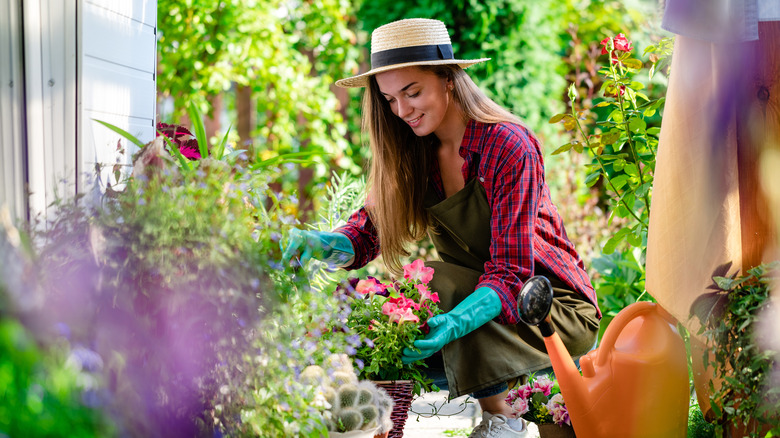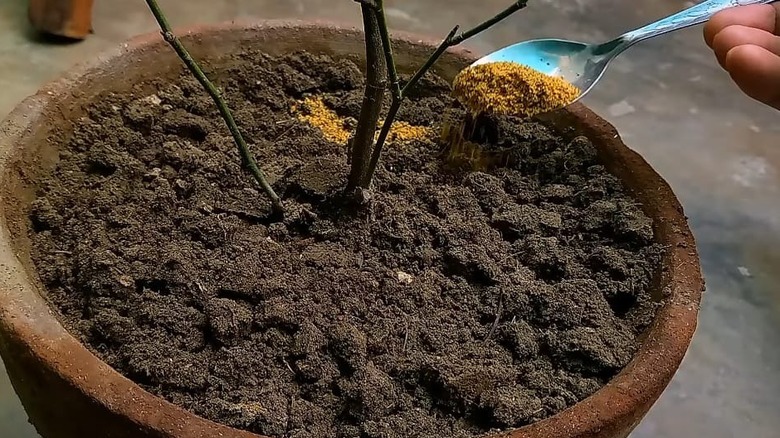Why You Should Be Using Mustard In Your Garden
When you think about mustard, likely your mind drifts to BBQ picnics, secret burger sauce recipes, and perhaps, adventurous marinades. This fine wonder is obtained by grinding the piquant seeds of various mustard plants. Although it's akin to its cousin, the mustard cake powder(the solid residue left after grinding and pressing for oil), mustard powder brings a unique dash of diversity. It's a sneaky addition to baking escapades, the unsung hero in pickling ventures, and an indispensable facet in salad dressings, rubs, and spice blends. Yet, the humble mustard powder's prowess extends beyond your kitchen, renting a prime earthy spot to protect your green companions.
One of mustard powder's primary claims to a healthy garden is its ability to repel pests. And just as it brings life to your dishes, this crusader appears to have an uncanny talent for thwarting fungi, helping maintain a healthy life for your plants by keeping root decay at bay. Moreover, it doubles as a ravishing natural fertilizer, enriching the soil and promoting robust plant growth. But then, how do you use mustard for plants? Primary battle tactics include sprinkling the powder like protective fairy dust, pouring a potent concoction around affected portions, or spraying. If feeling more adventurous, puree raw mustard plants and wield the liquid magic as a formidable defense against those pesky pests.
What does mustard powder do for the garden?
Ground mustard could be the pest control vigilante your garden didn't know it needed. The star of the show is a pungent compound found in a mustard powder called sinigrin. With its strong aroma, sinigrin makes an unappetizing cocktail for pests. From aphids and caterpillars to beetle larvae and ants, all find a strong adversary in this gardening friend. And for the softer-bodied invaders like slugs, mustard is a skin-irritating fashion faux-pas they'll avoid at all costs. But mustard is not just a one-trick pony. It moonlights as a natural fertilizer, wearing a mighty armor packed with crucial nutrients. To name a few players on this dream team contributing uniquely to your plant's wellness and growth journey: Nitrogen fuels photosynthesis, and phosphorus promotes root, fruit, and fruit development. Meanwhile, sulfur is the star player in the amino acids and proteins team.
Yet the golden glow of mustard doesn't stop there. It's also an expert at enhancing soil fertility. Its organic matter softens the soil and aids in the wholesome fostering of beneficial soil microbes. Picture a supportive friend creating a cozy room for a perfect tea party. Similarly, this multi-talented guardian enhances soil's function and texture while upping its water-holding capacity. And the best part? It does all this while staying true to its eco-friendly roots and keeping your garden in its prime.
How to use mustard for plants
Kicking off our showdown of ways to use mustard in your garden is the sprinkle method. Donning some gloves, channel your inner garden sorcerer by dusting 5 to 8 inches around the base of your plants with one to 2 tablespoons of mustard powder. Be mindful, though, as the magic wanes, demanding reapplication after rain or a few days. And while it's all fun and games for your plants, remember that sinigrin, the potent ingredient, isn't pet-friendly. Next, behold the mustard pour. Simply whisk ⅓ cup of mustard powder and 1 gallon of water for each square foot of the target area. A potion of mustard leaves and stalks pureed with water is a worthy alternative. And although these plant parts contain modest sinigrin concentrations, your garden shall yet revel in the spicy embrace.
Lastly, we unveil the mustard foliar spray. Picture a mist of enchanted protection descending upon your flora kingdom. Here, concoct 100 grams of mustard powder and 1.3 gallons of water in a container, let it sunbathe for two to three days (or five to six days in winter), and watch the magic brew indicate its readiness with a brown hue. From there, dilute your mustard botanical masterpiece with 1 gallon of water and add 2 tablespoons of dish soap. The soap is a surfactant, minimizing surface tension so the garden spray doesn't bead up and roll off like water off a duck's back but clings on for a more profound effect.


